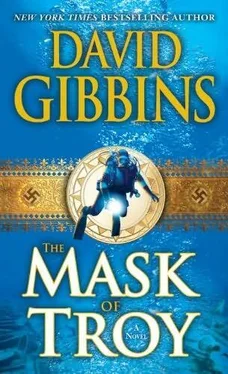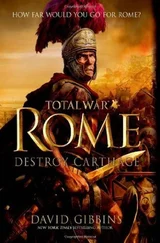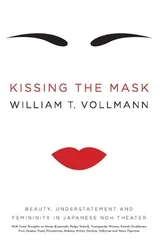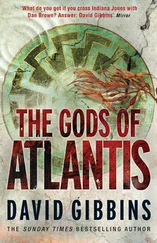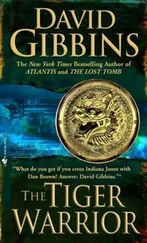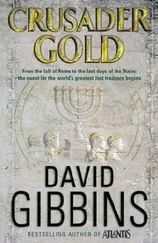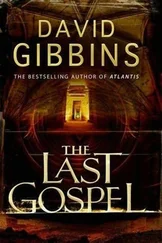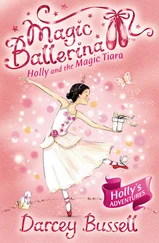David Gibbins - The Mask of Troy
Здесь есть возможность читать онлайн «David Gibbins - The Mask of Troy» весь текст электронной книги совершенно бесплатно (целиком полную версию без сокращений). В некоторых случаях можно слушать аудио, скачать через торрент в формате fb2 и присутствует краткое содержание. Жанр: Триллер, на английском языке. Описание произведения, (предисловие) а так же отзывы посетителей доступны на портале библиотеки ЛибКат.
- Название:The Mask of Troy
- Автор:
- Жанр:
- Год:неизвестен
- ISBN:нет данных
- Рейтинг книги:3 / 5. Голосов: 1
-
Избранное:Добавить в избранное
- Отзывы:
-
Ваша оценка:
- 60
- 1
- 2
- 3
- 4
- 5
The Mask of Troy: краткое содержание, описание и аннотация
Предлагаем к чтению аннотацию, описание, краткое содержание или предисловие (зависит от того, что написал сам автор книги «The Mask of Troy»). Если вы не нашли необходимую информацию о книге — напишите в комментариях, мы постараемся отыскать её.
The Mask of Troy — читать онлайн бесплатно полную книгу (весь текст) целиком
Ниже представлен текст книги, разбитый по страницам. Система сохранения места последней прочитанной страницы, позволяет с удобством читать онлайн бесплатно книгу «The Mask of Troy», без необходимости каждый раз заново искать на чём Вы остановились. Поставьте закладку, и сможете в любой момент перейти на страницу, на которой закончили чтение.
Интервал:
Закладка:
‘Jack.’
‘What?’
‘You can’t kid me. Jack Howard doesn’t get a five-million-dollar special grant from IMU, talk about nothing else for months on end, book Seaquest II for an entire summer and assemble the biggest team of experts we’ve ever fielded, just to find a lump of soggy timbers. It just doesn’t happen.’
Jack sighed dramatically. ‘You really want to know.’
‘You bet.’
Jack jerked his thumb at the screen. ‘It’s the next image. I would have told the team, but I didn’t want someone talking and the press getting hold of it. This project’s already front-page news. We’d have every treasure-hunter and pirate in the world descending on this place.’
‘Go on.’
Jack took a deep breath. ‘Okay. In the Iliad, Achilles lends Patroclus his armour, but then Hector kills Patroclus and strips it off him as a trophy. So Achilles’ mother, the sea-nymph Thetis, goes to Hephaestos, god of the forge, and has him fashion new armour for Achilles. The centrepiece was a magnificent shield, covered with images. Homer devotes almost two hundred lines to it. It’s the first time in literature that an object is described in that way, as a work of art. The shield beguiled later classical authors, from Hesiod to Virgil, as well as modern writers. W.H. Auden wrote a poem about it.’
Costas cleared his throat. ‘You mean this? Auden’s talking about the images Hephaestus is creating on the shield, watched by Thetis. Instead of beautiful cities and flourishing fields, he creates “an artificial wilderness, and a sky like lead”.’
Jack stared at him, stunned. ‘You never cease to amaze me.’
‘My English teacher at school in New York. Dead Poets Society, and all that. It must have sunk in while I was doodling submarines. I liked the “ships on untamed seas” bit.’
‘You were a member of the poetry society at school? You? ’
Costas fidgeted. ‘Never underestimate an engineer.’
‘Does your inseparable buddy Jeremy know this?’ Jack flipped open his phone. ‘He’s over there at Troy now. This is breaking news.’
Costas clamped a hand over Jack’s. ‘Does the world know that the famous marine archaeologist Jack Howard gets seasick?’
Jack stared at the phone, sighed and snapped it shut. ‘Touche. Just no more secrets.’
‘It wasn’t a secret. It was a hidden depth.’
Jack grinned, looked at his watch, and carried on. ‘You’d be surprised by Jeremy’s reaction. But back to Auden. He’d gone as an observer to the Sino-Japanese war in 1938, and worked for the US Strategic Bombing Survey in Germany in 1945. He’d seen the reality of war. For him, it was an all-encompassing horror that obliterated everything around it, that neutered images of life, of light and colour. A painting of Auden’s poem would be monotone, grey, with none of the gold and silver in Homer’s description. Imagine those black and white photographs of bombed-out cities of Germany, or images of the death camps, all colour sucked out of them.’
‘So what do you think the shield might have looked like?’ Costas asked.
Jack tapped the laptop keyboard. Lanowski’s bathymetric map on the screen transformed into the image of a magnificent circular shield, gold and silver, its surface divided into concentric circles densely populated with figural scenes. Costas whistled. ‘Now that’s more like it. That’s what I call treasure.’
‘Here it is according to the Italian artist Angelo Monticelli,’ Jack said. ‘He followed Homer’s description by showing a figure of divinity in the centre, then five concentric circles – zoomorphic representations of the constellations, then those two registers showing vignettes of people in city and pastoral scenes, some playing music. The figures look classical, too late for the Bronze Age. But Monticelli finished this about 1820, before anyone knew what Mycenaean art looked like. Many people still thought Homer’s world was entirely mythical. It was more than half a century before Schliemann was to discover Troy and Mycenae.’
‘Do you think Schliemann knew of this image?’
‘As a boy in Germany he’d been fascinated by a picture in Georg Ludwig Jerrer’s Universal History for Children, showing Aeneus rescuing his father Anchises from burning Troy. Schliemann knew the lure of treasure. He’d made his fortune in America on the back of the California gold rush, in the early 1850s. But it wasn’t greed that propelled him to Troy and Mycenae, it was a fascination with the power and meaning of artefacts, the people behind them. That’s why the image of the shield would have fascinated him. It’s why I’ve always felt I understood Schliemann. God knows, he had his faults. He mythologized his own past. He dug Troy like a bulldozer. And who knows what happened to his greatest discoveries, what he and his wife Sophia really found when they disappeared at night to dig alone. But look at his achievements. He opened the world to the glories of the Aegean Bronze Age. He changed our perception of myth and history. You can’t knock that. I don’t know any archaeologists today who would have the courage or imagination to make the leaps he did.’
‘I can think of one,’ Costas murmured.
Jack tapped the keyboard again. Two images came up, one a beautiful golden cup with scenes in relief, the other a group of swords. ‘When Monticelli made that painting, the only available images from antiquity came from the art of Greece and Rome, so that’s what he used. His figures look as if they’ve been lifted from sculptures in Rome. But these two images here are the real thing, actual Mycenaean art. The one on the left is the Vaphaio Cup from Greece, with wonderful relief work in gold, showing scenes of a hunt. And those are swords found by Schliemann at Mycenae, inlaid with gold and niello. These images suggest what we might expect to find on a shield, bronze decorated with inlays and gold relief. But they tell us more than that. Look at the bull on the cup. It’s stretched, powerful, a scene of intense action. The classical figures on Monticelli’s shield are indolent, posed, idealistic. Mycenaean art had an edge to it. The shield may have contained pastoral scenes, images of peaceful life, but there would have been a vibrancy to them, a dynamism, as if everything were tightly wound. In the world of the late Bronze Age, violence may have been ritualized, channelled through the contest of heroes, but it was still violence, a visible part of day-to-day life. It was a world where men at leisure didn’t lounge around in gymnasia or bathhouses as in the classical period, but went outdoors to hunt and play, to engage in bloody combat with boars and bulls and each other.’
‘So what about images of real men?’ Costas said. ‘Are there any Bronze Age portraits? Heroes and kings?’
Jack nodded slowly. ‘One stormy night in 1876 in the royal grave circle at Mycenae, Schliemann found this.’ He tapped, and the image changed to one of the most fabulous archaeological discoveries of all time, a golden mask in the shape of an angular, bearded face, the eyes hooded, elusive. It was the ultimate image of kingly power, aloof, unknowable, but unmistakably human, not the idealized image of a god.
‘The Mask of Agamemnon,’ Costas murmured. ‘When I was home in Greece as a boy, my grandfather took me to see it. It’s virtually a national symbol. It’s the pride of the National Archaeological Museum in Athens.’
Jack stared hard at the image, trying as he had done a thousand times before to see beyond those hooded lids, to reach into the soul of the man who lay behind the mask. ‘According to the Iliad, the shield of Achilles was made during the siege of Troy, in the ninth year, close to the end. An expeditionary army in the field for so long would have had its own smiths and forges, its own armourers, probably at their base on the island of Tenedos. When Achilles needs new armour, he sends word back there. Forget about mythical Thetis and the forge on Olympus, but imagine some down-to-earth Hephaestos whose job is to keep the heroes supplied with all their finery, whose workshop does more than fix helmets and churn out spearheads. Our guy’s an artist, used to creating pieces of armour for swagger and display. And look at that mask. Mycenaean artists could do portraits.’
Читать дальшеИнтервал:
Закладка:
Похожие книги на «The Mask of Troy»
Представляем Вашему вниманию похожие книги на «The Mask of Troy» списком для выбора. Мы отобрали схожую по названию и смыслу литературу в надежде предоставить читателям больше вариантов отыскать новые, интересные, ещё непрочитанные произведения.
Обсуждение, отзывы о книге «The Mask of Troy» и просто собственные мнения читателей. Оставьте ваши комментарии, напишите, что Вы думаете о произведении, его смысле или главных героях. Укажите что конкретно понравилось, а что нет, и почему Вы так считаете.
